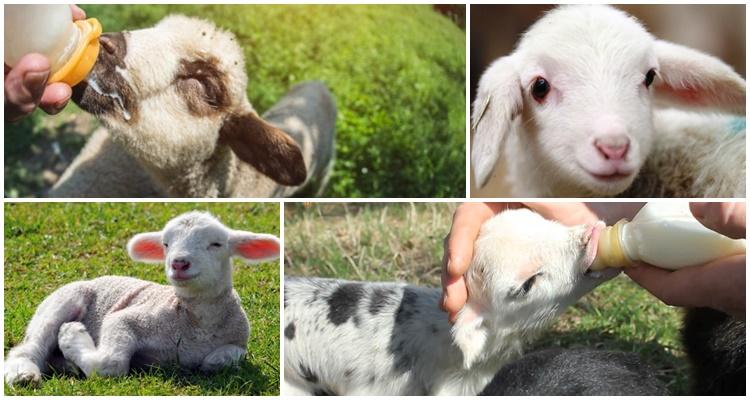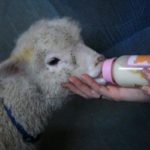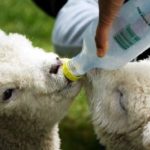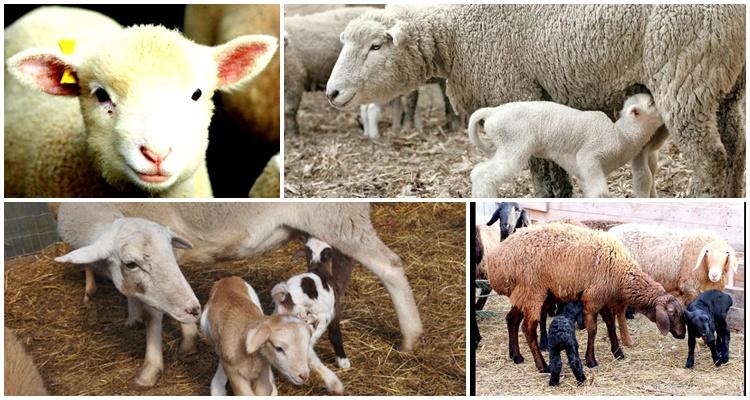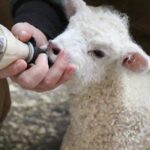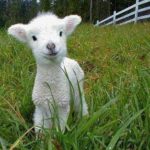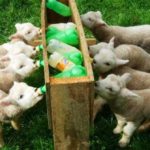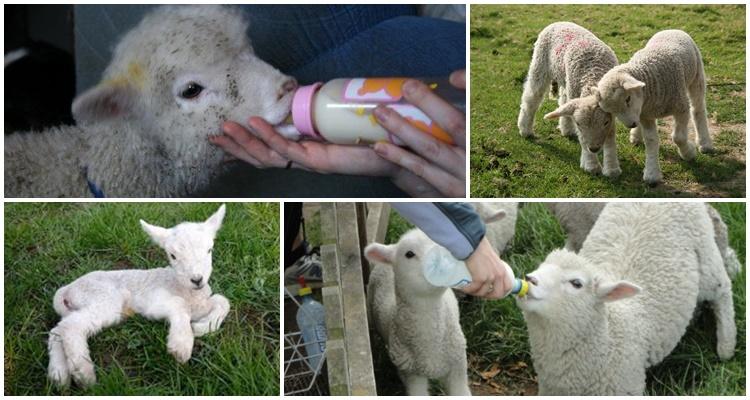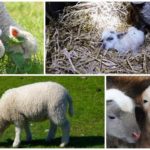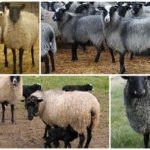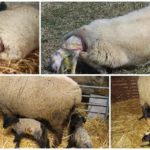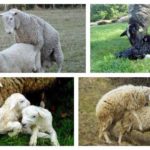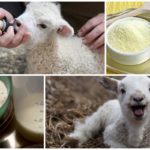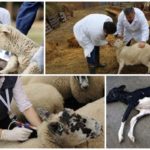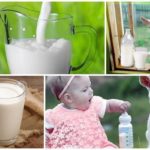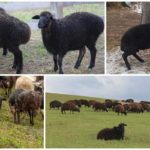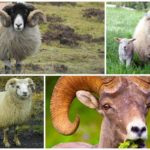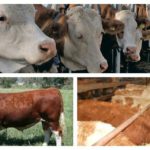The situation when a lamb finds itself without food because the mother died or refuses to feed often happens. Proper and nutritious nutrition is extremely important in the first weeks of a baby’s life; it ensures strong immunity. Every farmer should know how to water a newborn lamb without a sheep in order to save it from death. There are several methods of soldering; the owner chooses the appropriate one, taking into account the situation and his own capabilities.
What to feed lambs without a sheep
The reason why the lamb was left without a mother is not so important, but the important thing is that it will die if it is not properly watered.When a sheep is sick, refuses to feed its offspring, or dies, the orphaned baby is fed in one of the following ways:
- they sit with another queen;
- they drink milk milked from another sheep;
- drink goat's or cow's milk;
- fed with a synthetic analogue of milk.
Milk is the main food product of a newborn lamb. Within 2 days after birth, the baby must receive maternal colostrum at least once, without which the immune system will not “turn on,” the internal organs will not begin to function fully, and the body will not survive. Next, you can give your pet a drink using any of the above methods.
Experienced farmers keep a second lactating female nearby during the birth of one sheep, which, if necessary, becomes a wet nurse.
If a sheep that has given birth does not have problems with lactation, but refuses to feed, then the colostrum is milked to feed the offspring. If the lambs suckle their mother, but she does not have enough milk for everyone, then complementary feeding is required, without which the young will grow weak, get sick, and are highly likely to die. You can ask for colostrum from another farm if yours does not have lactating sheep.
Cow's milk used for feeding or supplementation needs to be enriched, since its composition is somewhat different. Sheep products contain more fat. For enrichment, fish oil and chicken eggs are added to cow's milk. The resulting mixture is heated to 35-40 °C, poured into a bottle, and a rubber nipple is put on so that the baby can suck comfortably.
You can feed the lamb with synthetic milk powder, which is sold in veterinary pharmacies. The product contains the optimal amount of fat and nutrients necessary for a developing animal.It is prepared like baby formula: the powder is dissolved in boiled water. You cannot give semolina porridge to a newborn lamb. The product is difficult to digest; it is permissible to include it in the diet in an amount of no more than 100 g per day when the animal is one month old.
But from 2 weeks of age, the cub can eat a small amount of oatmeal.
According to the adult diet, the lamb eats from 3 months of age; from this period, feeding with milk ceases to be a vital necessity. The diet of a growing pet includes:
- juicy food - grass, root vegetables, silage;
- roughage - hay;
- concentrates – grain compositions, mixed feed;
- sources of vitamins and mineral elements - salt stones, bone meal, chalk.
A lamb that reaches 3 months of age can be put out to pasture with the rest of the sheep.
How to place lambs with another sheep?
When several sheep give birth at the same time on a farm, they can be given lambs left without a mother. But sheep recognize their own offspring by smell, so they do not always accept other people’s offspring, and they die without receiving colostrum. There are several ways to prevent youngsters from being discarded by stepmothers:
- The refusenik's fur is coated with colostrum or the contents of the amniotic sac of a sheep that has just given birth. The cub takes on the scent of its nurse.
- The refusenik is washed with a saline solution to wash away the mother's smell. Then its body is pressed against the body of the nurse’s own baby, the fur coats are rubbed against each other so that the smells of the lambs become the same.
- A high-yielding sheep is tied to a pen, its head is fixed so that it is not possible to turn around and smell the offspring. The lamb freely approaches the udder and receives colostrum.Usually, several such feedings are enough for the sheep to accept the step-child. A similar procedure can be carried out with a natural mother who refuses to feed her offspring.
Basic feeding rules
Lambs growing without a uterus are weak and do not have strong immunity. To prevent them from getting sick, growing them at home must be approached with the utmost responsibility. Small animals without sheep are kept dry and warm in a ventilated area. Artificial feeding involves the use of a bottle, which is disinfected before each feeding. All equipment for care and feeding is also disinfected and scalded with boiling water. Otherwise, pathogenic microorganisms will seriously harm the weak body of a lamb growing without a mother.
Newborn refuseniks are not overfed. But they shouldn’t starve either. Daily portions are strictly rationed. An overfed lamb has a high risk of gastric dysfunction. Feeding scheme without sheep:
- in the first week of a pet’s life, the interval between feedings should be a maximum of 2.5 hours, with a total of 6-7 meals per day, that is, they are fed both day and night;
- in the second week the number of feedings is reduced to 5;
- in the period from 3 to 6 weeks, 4 meals a day are enough to feed the pet;
- from the 7th week the lamb eats 3 times a day.
Feeding lamb by age
The diet changes as the lamb grows. From 2 weeks of age, the pet begins to consume complementary foods in the form of decoctions, and from one month of age - root vegetables. They are given at first 20 g each so that the lamb does not become diarrhea from unusual food, then the portion is increased every day by 10 g.From 2 months the animal is accustomed to grass.
The table shows the algorithm for feeding small pets from birth to one year of age.
| Age | Type of feed | Products | Quantity per day |
| feeding a newborn lamb without a sheep | milk | cow, sheep, goat, synthetic substitute | 200-400 ml |
| 2 weeks | milk | cow, sheep, goat, synthetic analogue | 400-800 ml |
| lure | decoction of oatmeal, oil cake, oatmeal, wheat bran | 40, 20, 25, 25 g | |
| minerals | drug "Tetravit" | injection under the skin 1 ml per individual | |
| monthly | milk | cow, sheep, goat, synthetic substitute | 800 ml |
| lure | decoction of oatmeal, cake, oat porridge, wheat bran, hay, root vegetables | 30, 60, 60, 60, 150-200, from 20 g | |
| 2 months | milk | cow, sheep, goat, synthetic analogue | 400-600 ml |
| lure | decoction of oat flakes, cake, oatmeal, wheat bran, grass, root vegetables | 20, 100, 100, 100, 500, 300 g | |
| minerals | salt stones, chalk | ||
| 3 month | main food | decoction of oatmeal, cake, oatmeal, wheat bran, grass, root vegetables | 20, 100, 150, 150, 900, 400 g |
| minerals | salt stones, chalk | ||
| from 4 months | main food | concentrates, hay, grass, root vegetables | 300, 400, 2000, 600 g |
| minerals | salt stones, mineral supplements | ||
| from 8 months | main food | coarse, juicy, concentrated | 40%, 30%, 45% |
| minerals | salt stones, mineral supplements |
What not to feed
A lamb, especially one growing without a sheep, has a weak digestive system and a delicate body, so the introduction of new foods into the diet should be gradual and careful. It is unacceptable to feed young animals, even those already switching to adult food, with the following products:
- sour and marsh herbs (sedge, horsetail and the like);
- sugar beets (it causes diabetes);
- bakery products, pastries.
Possible problems
When the lamb is 2 weeks old, it is weaned from sucking from a bottle and taught to feed from a bowl. This is not an easy task. If the pet stubbornly does not eat from unusual dishes, then do the following: dip a finger in milk, bring it to the animal’s mouth, then again slowly, demonstratively lower it into the bowl.
Soon the cub will become interested in the contents of the bowl. When this happens, you need to slightly change the feeding regimen, giving food 30 minutes later. The pet will get hungry, and interest in the contents of the dishes will increase even more.
Diarrhea in young animals is not uncommon. To reduce the likelihood of its occurrence, you should carefully monitor the quality of food and feeding regimen, and do not suddenly change the diet. If diarrhea does begin, the lamb should be given plenty of water to prevent dehydration, then taken to the veterinarian, especially if the diarrhea is accompanied by a deterioration in health and appetite.

